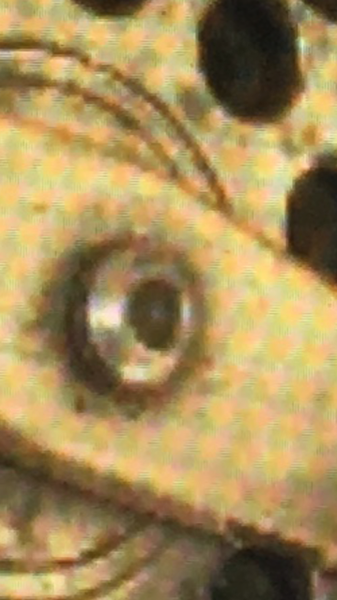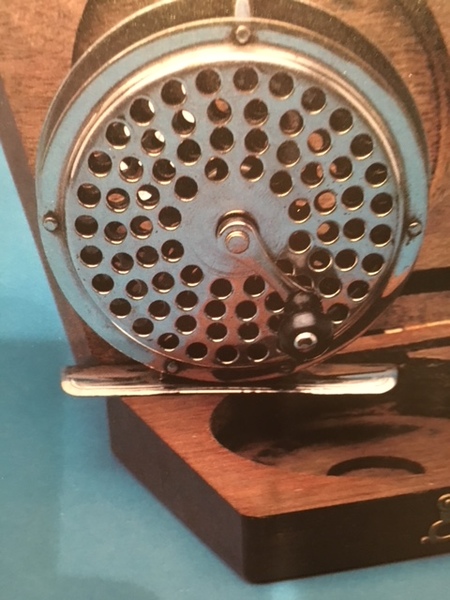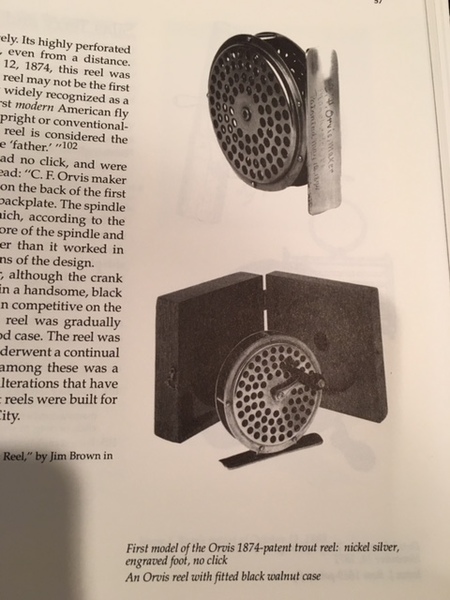PS This is photo of an Orvis handle from Ron G.’s website, where every reel google or other search engine ultimately sends you.






When you write the authoritative reel encyclopedia, you have to expect to be quoted.
Jim- What do you think of the handle after viewing the photos above of the Orvis THIRD model? Do you agree that it needs a similar donut-style nut? The nut is an old replacement off another reel. That is why I inquired about a “donut” nut.Jim Schottenham wrote:Mike,
No doubt in my mind that the nut on the left reel is not original. The handle itself looks OK, but I agree with Ron - we need to see the spindle under that nut.


That’s an interesting observation and probably correct, Ron, especially when you consider the Orvis first model where the handle had to be frequently removed to store it in the wooden box.RonG wrote:Sounds like you just screw the handle down tight and that's it. This is typical of a lot of fly and salmon reels, especially Julius vom Hofe reels.

Very good observation, Dean. I will try that when I get home. However, it still does not explain the need for the "donut" type of nut or washer that appears in the very first photos in this thread on Ron G.'s reel. Curious.reelsmith. wrote:Hey Mike.
It looks like the half-handle on your other Orvis is much thicker.
Have you tried putting it on the other reel to see if it covers all the threads ?
Dean.


Mike,However, it still does not explain the need for the "donut" type of nut or washer that appears in the very first photos in this thread on Ron G.'s reel
Who’d-a-thunk that hole was for air to dry the line? You are still numero uno, Jim, when it comes to vetting a reel.Jim Schottenham wrote:Mike,However, it still does not explain the need for the "donut" type of nut or washer that appears in the very first photos in this thread on Ron G.'s reel
I don't believe that Ron's reel had a nut at the end of the threaded spindle. None of the Orvis reels I've handled or have seen ever had one, all just having the threaded handle that screws on and off. The purpose of the hollow spindle is explained in the patent - Orvis intended it to aid in drying the line, allowing the water an additional place to escape. Early reels had a "perforated" hub, later models such as yours had a single hole to allow line to pass through, knot and secure line for winding.
If you PM me your address I'll send you a copy of Jim Brown's great article on these reels. I think you'd enjoy it.
Jim